FE | Risk Minimisation Patient
Diane-35® - A potent antiandrogenic progestogen for androgen excess1-4
Androgen excess can lead to long-term health issues. Give women the effective treatment they deserve with Diane-35®5-10
- Diane-35® contains a potent anti-androgenic progestogen (CPA) and provides effective treatment for androgen-related skin conditions11,12
Diane-35® helps to clear skin and gives women living with hirsutism caused by androgen excess new confidence,8,9 all while providing effective cycle control11,13,14
- Diane-35® helps women take control by improving moderate-to-severe acne11,13-15
- Diane-35® is an effective treatment for women with androgenic skin conditions of PCOS3,11,16-20
- Diane-35® has a long, proven history of efficacy for the targeted treatment of seborrhea caused by androgen excess4,11
Diane-35® is trusted by millions of women21
- When controlling androgen-related skin conditions, Diane-35® provides the added peace of mind of a contraceptive effect3,4,11,13-22
- Diane-35® offers women the reassurance of an established, long-term safety and tolerability profile1,2,4,11,14,18
* Exernplary illustration (stock image) of moderate-to-severe acne. The model image reflects data points at baseline and treatment cycle 36 from an uncontrolled open, multicenter phase Ill clinical trial (NZI , 161 women) investigating the therapeutic efficacy, contraceptive reliability and tolerance of a IOALdose combination (Diane•3S') in women with signs of androgenization in long-term use. Symptom severity was assessed and graded subjectively. Measures were the percentage of women that classified three Symptoms (acne, seborrhea and hirsutism) as 'absent' , 'mild' Or 'severe' from baseline to endpoint (Cycle 36), During the Study therapeutic results Were and recorded monthly. Evaluation Of the record forms performed covered 21 196 documented cycles in I , 161 women 11
CPA – cyproterone acetate; PCOS – polycystic ovary syndrome
- Neumann F. Exp Clin Endocrinol 1994; 102:1–32. Return to content
- Neumann F. Therapy for Signs of Androgenization, A.E. Schindler, Editor. 1987, W. de Gruyter: Berlin, New York. p. 23–40. Return to content
- Falsetti L, Gambera A and Tisi G. Hum Reprod 2001;16:36–42. Return to content
- Diane-35® Summary of Product Characteristics. Return to content
- Fauser BCJM, Tarlatzis BC, Rebar RW et al. Fertil Steril 2012;97:28–38. Return to content
- Wang ET, Calderon-Margalit, Cedars MI et al. Obstet Gynecol 2011:117:6–13. Return to content
- Daan NMP, Louwers YV, Koster MPH et al. Fertil Steril 2014;102:1444–1451. Return to content
- Brassard M, AinMelk Y and Baillargeon J-P. Med Clin North Am 2008;92:1163–1192. Return to content
- Sirmans SM and Pate KA. Clin Epidemiol 2014:6:1–13. Return to content
- Barry JA, Azizia MM and Hardiman PJ. Human Reprod Update. 2014:20(5):748–758 Return to content
- Aydinlik S el al Clinical Trials Journal 1990:27:392–402. Return to content
- Dreno B etal. Dermatology 2003:206(1):7–10 Return to content
- Dinger JC. EUR AS OC add sub-analysis 2010, ZEG. Return to content
- Spona J and Huber J. Gynecol Obstet Invest 1987;23:184-193 Return to content
- ErdmannD, Schindler EM and Schindler AE. Geburtshife Frauenheikd 1994;54:627–633. Return to content
- Bhattacharya SM and Jha A. Ferti Stetil 2012:98:1053–1059. Return to content
- Falsetti L, Gambera A, Platto C et al. Am J Clin Dermatol 2000:1:89–99. Return to content
- Aydinlik S, Lachnit-Fixson U and Lehnert J.Fortschr Med 1986:104:547–550. Return to content
- Carlborg L. Acta Obstet Gynecol Scand Suppl 1986:134:29–32. Return to content
- Erkkola R, Hirvonen E, Luikku J et al. Acta Obstet Gynecol Scand 1990;69:61–65. Return to content
- Internal calculation: Number of cycles of Diane-35® sold globally during 2008–2017 (IMS MIDAS Data from IQVIA) divided by 13 cycles (assuming an average cycle length of 28 days when using Diane-35®, which results in 13 cycles during 365 days): 266.127.302 cycles / 13=20.471.331 women. Source: IQVIA MIDAS, except for NLD(Farminform). FRA(Gers), COL(CloseUp Colombia). Database: CurrentAII, Q 4/17 # Countries on which analysis is based: 57. Return to content
- Drosdzol A, Skrzypulec V and Plinta R. Psychosom Obstet Gynaecol 2010;
31:168–175. Return to content






